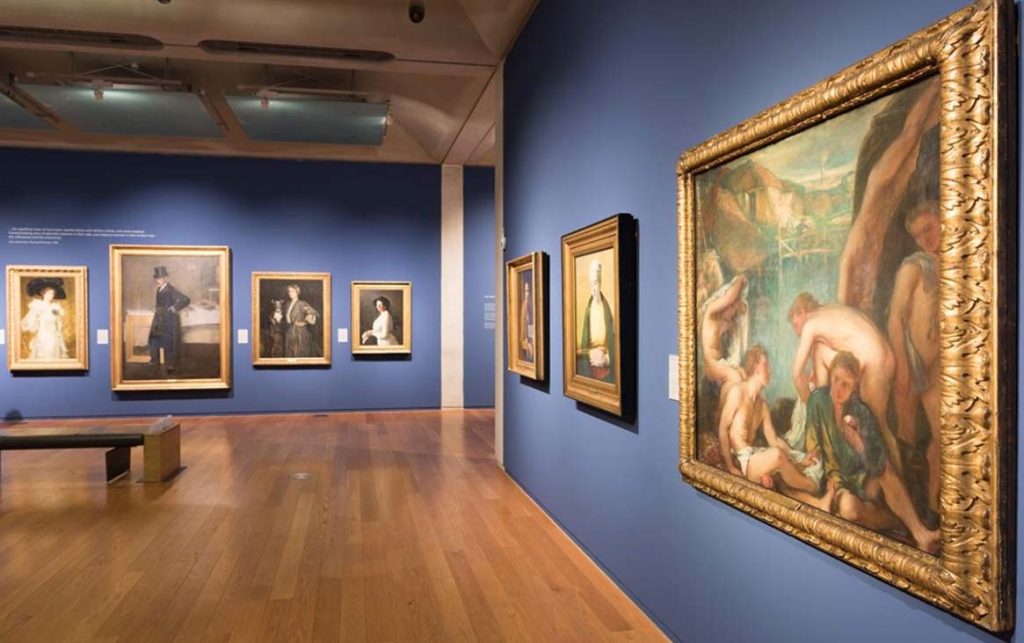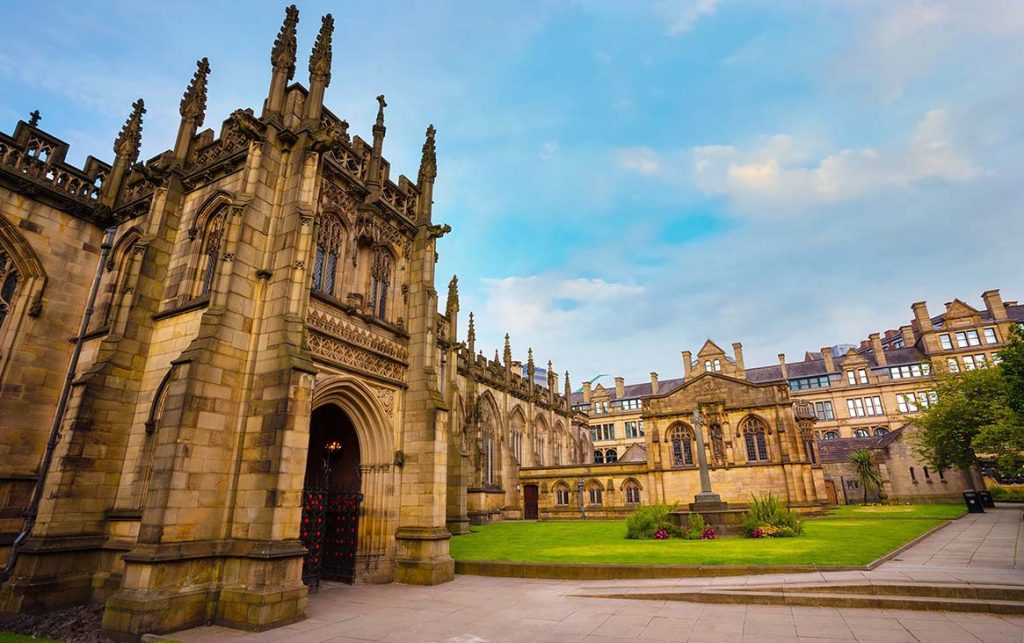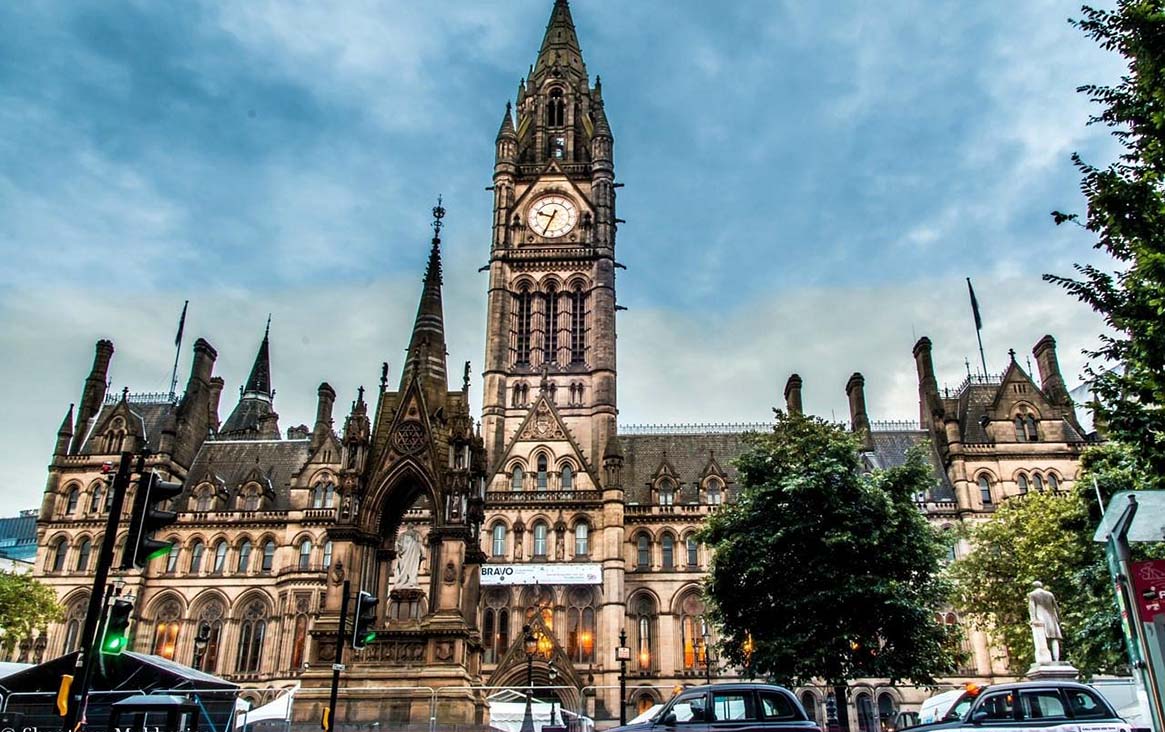Manchester, a city in the northwest of England, is a place brimming with history, culture, and innovation. Known for its significant contributions to music, sports, and industry, it offers a unique blend of the old and the new.
This journey takes you through six must-visit attractions in Manchester, providing detailed information on their locations, how to get there, ticket prices, discounts, and my personal recommendations.
The Timeless Charm of The John Rylands Library
The John Rylands Library, located on Deansgate in the heart of Manchester, is one of the most beautiful libraries in the world. Founded by Enriqueta Rylands in memory of her husband, John Rylands, this neo-Gothic building opened to the public in 1900. It houses a vast collection of rare books and manuscripts, including a Gutenberg Bible and a collection of early printed texts. The library is not just a haven for scholars but also a captivating place for anyone who appreciates architectural beauty and history.
Location and How to Get There
The John Rylands Library is situated at 150 Deansgate, Manchester M3 3EH.
From Manchester Airport:
– By Train: Take a train from Manchester Airport to Manchester Oxford Road station (approximately 20 minutes). From there, it’s a 10-minute walk to the library.
– By Taxi: A taxi ride from the airport to the library takes about 25 minutes.
From Manchester Piccadilly Station:
– By Tram: Take the Metrolink tram towards Altrincham or MediaCityUK and get off at St Peter’s Square. The library is a 5-minute walk from there.
– By Walk: It’s about a 15-minute walk straight down Portland Street to Deansgate.
Ticket Prices and Discounts
The John Rylands Library is free to enter, which makes it an ideal destination for budget travelers. However, donations are welcome to help maintain the library’s impressive collection and historic building.
Walking into the John Rylands Library is like stepping into a different era. The stunning neo-Gothic architecture is a feast for the eyes, with its high vaulted ceilings, intricate wood carvings, and beautiful stained glass windows. The Historic Reading Room, with its rows of old wooden desks and shelves lined with ancient books, feels like a scene straight out of a Harry Potter movie.
The collection itself is remarkable. I spent hours marveling at the Gutenberg Bible and the numerous medieval manuscripts. The library also hosts rotating exhibitions, which showcase various themes and rare items from their collection. One of the most memorable aspects of my visit was the palpable sense of history and scholarship that pervades the space. It’s a place where you can almost feel the presence of the past scholars who once pored over these ancient texts.
The library staff were incredibly knowledgeable and passionate about the collection. They provided fascinating insights into the history of the building and its contents. The atmosphere in the John Rylands Library is serene and contemplative, offering a peaceful retreat from the bustling city outside.
Art and Elegance at Manchester Art Gallery

Manchester Art Gallery, located on Mosley Street, is one of the leading art galleries in the United Kingdom. It houses an extensive collection of fine art, including British masterpieces, European paintings, decorative arts, and contemporary works. Established in 1823, the gallery has played a significant role in Manchester’s cultural life, offering a rich array of exhibitions and educational programs.
Location and How to Get There
The Manchester Art Gallery is located at Mosley Street, Manchester M2 3JL, right in the city center.
From Manchester Airport:
– By Train: Take the train to Manchester Piccadilly. From there, it’s a 10-minute walk down Portland Street.
– By Taxi: A taxi will get you there in about 20 minutes.
From Manchester Piccadilly Station:
– By Walk: Walk straight down Market Street to Mosley Street, which will take around 10 minutes.
– By Tram: Take the tram to Piccadilly Gardens, and the gallery is a 3-minute walk from there.
Ticket Prices and Discounts
Entry to the Manchester Art Gallery is free. Special exhibitions may have a separate entry fee, which varies depending on the exhibit.
Manchester Art Gallery is a treasure trove for art enthusiasts. Upon entering, I was immediately struck by the grandeur of the building, with its classic architectural features and spacious, well-lit rooms that perfectly showcase the artworks. The gallery’s collection spans several centuries and includes notable works by artists such as J.M.W. Turner, Dante Gabriel Rossetti, and Ford Madox Brown.
One of my favorite sections was the Pre-Raphaelite paintings. The vibrant colors and intricate details in these works are truly mesmerizing. It’s easy to lose track of time as you move from one breathtaking piece to another. The gallery also has a significant collection of contemporary art, providing a fascinating contrast to the more traditional works.
The interactive exhibits and educational programs make the gallery accessible to all ages. I noticed several families and school groups engaging with the art through hands-on activities and guided tours. The gallery’s commitment to inclusivity and education is evident in every aspect of its operation.
After exploring the exhibits, I relaxed in the gallery’s café, enjoying a delicious cup of tea and a slice of cake. The café offers a serene environment to reflect on the art and enjoy a break. The gift shop, filled with unique art-inspired merchandise, is also worth a visit.
Discovering Innovation at The Science and Industry Museum
The Science and Industry Museum, located in the Castlefield area of Manchester, is dedicated to the city’s rich industrial heritage and scientific achievements. Housed in a collection of historic buildings, including the world’s oldest surviving passenger railway station, the museum covers a wide range of topics, from textile machinery and steam engines to computing and space exploration. It offers an educational and engaging experience for visitors of all ages.
Location and How to Get There
The museum is located at Liverpool Road, Manchester M3 4FP, in the Castlefield area.
From Manchester Airport:
– By Train: Take the train to Manchester Oxford Road. From there, it’s about a 15-minute walk.
– By Taxi: The taxi ride takes around 25 minutes.
From Manchester Piccadilly Station:
– By Tram: Take the tram to Deansgate-Castlefield, and then it’s a 10-minute walk to the museum.
– By Walk: It’s a pleasant 20-minute walk through the city center.
Ticket Prices and Discounts
Entry to the Science and Industry Museum is free, though donations are encouraged. Some special exhibitions may have a fee.
The Science and Industry Museum is a fascinating place that chronicles Manchester’s pivotal role in the industrial revolution. The displays on textile machinery, the development of computing, and the power hall showcasing steam engines are particularly engaging. The museum’s interactive exhibits make it a great place for families and anyone interested in the history of technology and industry.
The museum’s exhibits are thoughtfully arranged to guide visitors through the various phases of Manchester’s industrial history. I was particularly intrigued by the textile machinery exhibits, which vividly illustrate how Manchester became known as “Cottonopolis” during the 19th century. Watching the machinery in action gave me a profound appreciation for the ingenuity and labor that fueled the Industrial Revolution.
Another highlight was the Power Hall, where massive steam engines and other industrial machinery are displayed. The sheer scale and power of these machines are awe-inspiring. It’s incredible to think about the impact these innovations had on society and the economy at the time.
The museum also explores more recent technological advancements. The exhibit on the development of computing was especially fascinating, showcasing everything from early mechanical calculators to modern computers. The museum’s space exploration section, featuring models and artifacts from various space missions, captivated my imagination and made me appreciate the boundless possibilities of human ingenuity.
Children and adults alike can engage with hands-on activities that demonstrate scientific principles in a fun and accessible way. The museum’s educational programs and workshops further enhance the learning experience, making it a fantastic destination for school groups and families.
Sacred Serenity at Manchester Cathedral

Manchester Cathedral, formally known as the Cathedral and Collegiate Church of St Mary, St Denys, and St George, is a stunning example of Gothic architecture located in the city center. With origins dating back to 1421, the cathedral has undergone several renovations and restorations over the centuries. It serves as a place of worship, a historical monument, and a venue for cultural events. The cathedral’s serene atmosphere and rich history make it a must-visit destination in Manchester.
Location and How to Get There
Manchester Cathedral is located at Victoria Street, Manchester M3 1SX, close to the River Irwell.
From Manchester Airport:
– By Train: Take the train to Manchester Victoria. The cathedral is a 5-minute walk from the station.
– By Taxi: A taxi ride will take approximately 25 minutes.
From Manchester Piccadilly Station:
– By Tram: Take the tram to Victoria, then walk for about 5 minutes.
– By Walk: It’s a 20-minute walk through the city center.
Ticket Prices and Discounts
Entrance to Manchester Cathedral is free, though donations are appreciated. Guided tours may incur a small fee.
The moment I stepped into Manchester Cathedral, I was enveloped by a sense of tranquility and reverence. The cathedral’s Gothic architecture is both majestic and intricate, with high vaulted ceilings, detailed stone carvings, and beautiful stained glass windows. Each element of the cathedral tells a story of faith, artistry, and history.
One of the most striking features of the cathedral is the medieval woodwork in the choir area. The intricately carved misericords and choir stalls are exceptional examples of craftsmanship from centuries past. The stained glass windows, particularly the Fire Window designed by Margaret Traherne, add vibrant colors and light to the interior, creating an atmosphere of sacred beauty.
I attended an Evensong service during my visit, which was a deeply moving experience. The choral music resonated through the nave, creating an ethereal ambiance that enhanced the sense of spirituality and connection. Even if you’re not religious, attending a service or concert at the cathedral can be a profoundly uplifting experience.
The cathedral also offers guided tours, which provide fascinating insights into its history and architecture. I found the tour to be incredibly informative, shedding light on the various phases of construction, the impact of the English Reformation, and the cathedral’s role in the community over the centuries.
Outside, the cathedral grounds are beautifully maintained and provide a peaceful retreat in the heart of the city. The adjacent Visitor Centre houses a shop and café, where you can relax and enjoy a hot drink while reflecting on your visit.
Vibrant Creativity in The Northern Quarter
The Northern Quarter, located between Piccadilly and Ancoats, is Manchester’s cultural and creative hub. Known for its vibrant street art, independent boutiques, vintage shops, and eclectic cafes, this area offers a stark contrast to the city’s more commercialized zones. It’s a place where creativity thrives, attracting artists, musicians, and entrepreneurs who contribute to its unique atmosphere.
Location and How to Get There
The Northern Quarter is located between Piccadilly and Ancoats, bounded by Piccadilly Gardens, Great Ancoats Street, and High Street.
From Manchester Airport:
– By Train: Take the train to Manchester Piccadilly. The Northern Quarter is a 5-minute walk from there.
– By Taxi: A taxi will take around 25 minutes.
From Manchester Piccadilly Station:
– By Walk: Walk down Market Street towards High Street, which takes about 5 minutes.
Ticket Prices and Discounts
The Northern Quarter itself is an open area with no entry fee. Individual shops, cafes, and venues have varying prices.
Exploring the Northern Quarter feels like stepping into a different world, one where creativity and individuality are celebrated. The area is a sensory delight, with colorful murals and street art adorning almost every available wall space. Each piece of art tells its own story and contributes to the area’s dynamic vibe.
I spent hours wandering through the Northern Quarter’s narrow streets and alleys, discovering an array of unique shops and cafes. Afflecks, a multi-floor emporium of eclectic shops, is a highlight. It’s a treasure trove of vintage clothing, quirky accessories, and handmade crafts. Each stall within Afflecks has its own distinct personality, making every visit a new adventure.
The area is also a food lover’s paradise. I enjoyed a delicious brunch at Evelyn’s Cafe Bar, where the atmosphere was cozy and the menu was both creative and flavorful. Later, I indulged in some of the best coffee I’ve ever had at Takk, a Nordic-inspired café known for its minimalist décor and high-quality brews.
Despite being a bustling area, there’s a sense of camaraderie among the local business owners and residents. Many of the shops and cafes prioritize sustainability and ethical practices, which aligns with the area’s progressive ethos.
The Northern Quarter also comes alive at night, with numerous bars and music venues offering a diverse range of entertainment. Matt and Phred’s, a jazz club, is a great place to unwind with live music and a relaxed atmosphere. For those who prefer something more energetic, The Frog and Bucket Comedy Club offers a night full of laughter with its regular stand-up shows.
The Northern Quarter’s eclectic mix of art, fashion, food, and music makes it a must-visit destination for anyone looking to experience the creative pulse of Manchester. It’s a place where you can easily spend an entire day exploring and still find new surprises around every corner.
The Iconic Old Trafford: A Pilgrimage for Football Fans
Old Trafford, the iconic home of Manchester United Football Club, is located at Sir Matt Busby Way in the Old Trafford district of Manchester. Known as the “Theatre of Dreams,” this stadium has witnessed countless historic moments in football. Opened in 1910, it has a seating capacity of over 74,000, making it one of the largest stadiums in the United Kingdom. Besides hosting football matches, Old Trafford offers comprehensive stadium tours and houses the Manchester United Museum, which delves into the club’s storied history.
Location and How to Get There
Old Trafford is located at Sir Matt Busby Way, Old Trafford, Manchester M16 0RA.
From Manchester Airport:
– By Train: Take the train to Manchester Piccadilly, then take the Metrolink tram to Old Trafford station. From there, it’s a 10-minute walk to the stadium.
– By Taxi: A taxi ride will take about 30 minutes.
From Manchester Piccadilly Station:
– By Tram: Take the tram to Old Trafford station, then walk for about 10 minutes.
– By Bus: Several buses run from the city center to Old Trafford, with a journey time of around 20 minutes.
Ticket Prices and Discounts
Tickets for a stadium tour cost £25 for adults, £15 for children, and £60 for a family ticket (two adults and two children). Match tickets vary in price depending on the fixture and seating category.
Visiting Old Trafford was a dream come true for me as a football fan. The sense of history and tradition is palpable the moment you arrive. The stadium tour is comprehensive and offers an in-depth look at what makes Manchester United one of the most storied clubs in football history.
The tour begins in the museum, which houses an impressive collection of trophies, jerseys, and memorabilia. Seeing the European Cup and Premier League trophies up close was a surreal experience. The museum also features interactive exhibits that trace the evolution of the club from its humble beginnings to its current status as a global football powerhouse.
Walking through the players’ tunnel and stepping onto the pitch was a highlight of the tour. Standing on the edge of the field, looking up at the stands, and imagining the roar of over 74,000 fans is an unforgettable experience. The tour also includes access to the home and away dressing rooms, where you can see where football legends prepare for battle.
The stadium itself is a marvel of modern engineering, blending historic elements with contemporary amenities. The Sir Alex Ferguson Stand, named after the legendary manager, offers some of the best views in the stadium. The attention to detail in preserving the club’s history while providing a top-tier matchday experience is evident throughout the tour.
What truly stood out to me was the passion and knowledge of the tour guides. They shared countless anecdotes and insider stories that brought the club’s history to life. Whether it was tales of famous matches, legendary players, or significant moments, their enthusiasm was infectious and added a personal touch to the experience.
Manchester is a city that effortlessly combines its rich history with modern vibrancy. Each of the six attractions offers a unique glimpse into what makes this city so special. From the serene beauty of the John Rylands Library to the electric atmosphere of Old Trafford, Manchester has something for everyone.
Whether you’re a history buff, an art lover, or a sports fan, this city will not disappoint. I hope this detailed guide helps you plan your visit and immerse yourself in the wonders of Manchester.



